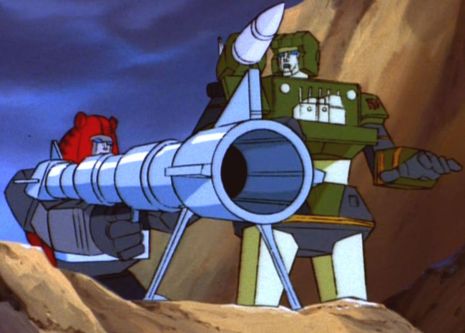Thanks! That was very interesting and informative at the same time

Since you seem to have a lot of knowledge of the toy lines, I'm curious why Devastator is so different from all the other Gestalt toys. With the other ones, you usually had about four vehicles with a fifth larger vehicle that acted as a hub. Most of the connecting bits were built into each robot themselves, reducing the amount of extra pieces you needed.
With Devastator though (as you know) he came with six individual robots and required several connecting pieces to connect them all into Devastator. Until the G2 line came out my Devastator was always missing pieces or broken all together (and I had lost of a few of the connecting pieces). It was just something I was always curious about.
Devastator's molds existed in Diaclone, and the original color was orange (later used for Generation 2 in some places). The distinctive green color was exclusive for Transformers. The later five-point combiners which became standard are what's known as the "
Scramble City" system. When the combining teams were introduced in Japan, Takara made a special episode called Scramble City which was designed to advertise not only them, but Metroplex and Trypticon as well. All of these molds had originally been designed for Diaclone but were never released in that line, and that's why they're designed to fit together as well. Metroplex will actually connect to Decepticon commanders like Onslaught and Motormaster just like Trypticon does, but for obvious reasons that feature wasn't mentioned when the figures were carried over for Transformers.
One of the features somewhat exclusive to the Japanese episode is that because of the design similarities, it's possible for the limb of a combiner to detach and fit into the socket of an enemy combiner if that limb is knocked off or damaged/injured, and thus mess up the whole gestalt robot. It was also assumed that the gestalt forms could rotate their limbs and utilize specific abilities for that individual, but this isn't translated in the best way.
Interestingly enough, there is a
concept art of Menasor's character model with the limbs in different positions and wearing Autobot symbols, implying that the Stunticons might have initially been conceived as Autobots in keeping with the ground/air scheme for the factions. Presumably this would mean that Superion would have been a Decepticon, but no other art of this concept has yet surfaced. If you compare the 1985 battle scenes, though, you can see what I mean earlier about differences between the
Japanese and
American versions. The Japanese version removes the non-Takara molds and puts the Constructicons in their place, along with Hoist and Blitzwing. Swoop is notably absent from the U.S. version this time, but the Japanese remembered. There are also two versions of Tracks (red and blue, the latter is next to the Dinobots) as the result of an apparent error. Red was the alternate Diaclone scheme and may have been intended for the American release, as Tracks is red on the American version, but blue was switched at the last moment. Europe did get the red version. Or maybe that was just
Road Rage.

Japan also recycled some elements for their
1986 package art, featuring the Scramble City characters.
The Combaticons had a
whole set of earlier character models, which strangely have bodies based on the toys but heads that aren't, whereas the finished models have toy-accurate heads but the bodies take some liberties. Swindle's final model wound up being rather strange, in that his torso seems clearly designed to transform so the front of the jeep is formed from his waist and feet and the rear/windshield section forms his chest and back. He was consistently animated this way, but his toy does the exact opposite mechanically.
Isn't production continuity fun?

Sometimes you run across some very interesting things, like this
test image which was seemingly used to evaluate the Pretender concept. They let Twin Twist test drive Waverider's shell apparently.





 Japan also recycled some elements for their
Japan also recycled some elements for their  Sometimes you run across some very interesting things, like this
Sometimes you run across some very interesting things, like this 